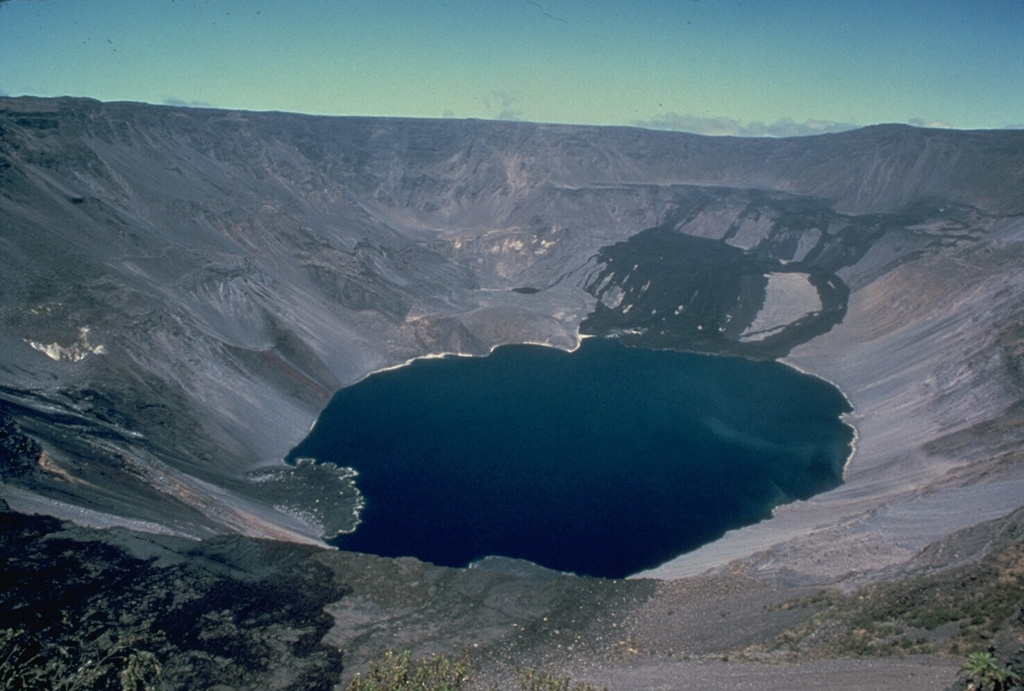Global Volcanism Program | Image GVP-04701

Fernandina, the most active of Galápagos volcanoes, is a basaltic shield volcano with a deep 4 x 6.5 km summit caldera. This 1978 photo shows dark lava flows at the far NW end that were erupted from the NW caldera bench in August 1978. The lava delta at the lower left was formed by lava flows down the west side of the SE bench in 1977. In 1968 the caldera floor dropped 350 m following a major explosive eruption. Collapse of part of the east caldera wall during a 1988 eruption produced a debris-avalanche deposit that absorbed the caldera lake.
Photo by Chuck Wood, 1978 (Smithsonian Institution).
![]() This image is made available under the Public Domain Dedication CC0 license, but proper attribution is appreciated.
This image is made available under the Public Domain Dedication CC0 license, but proper attribution is appreciated.

Fernandina
